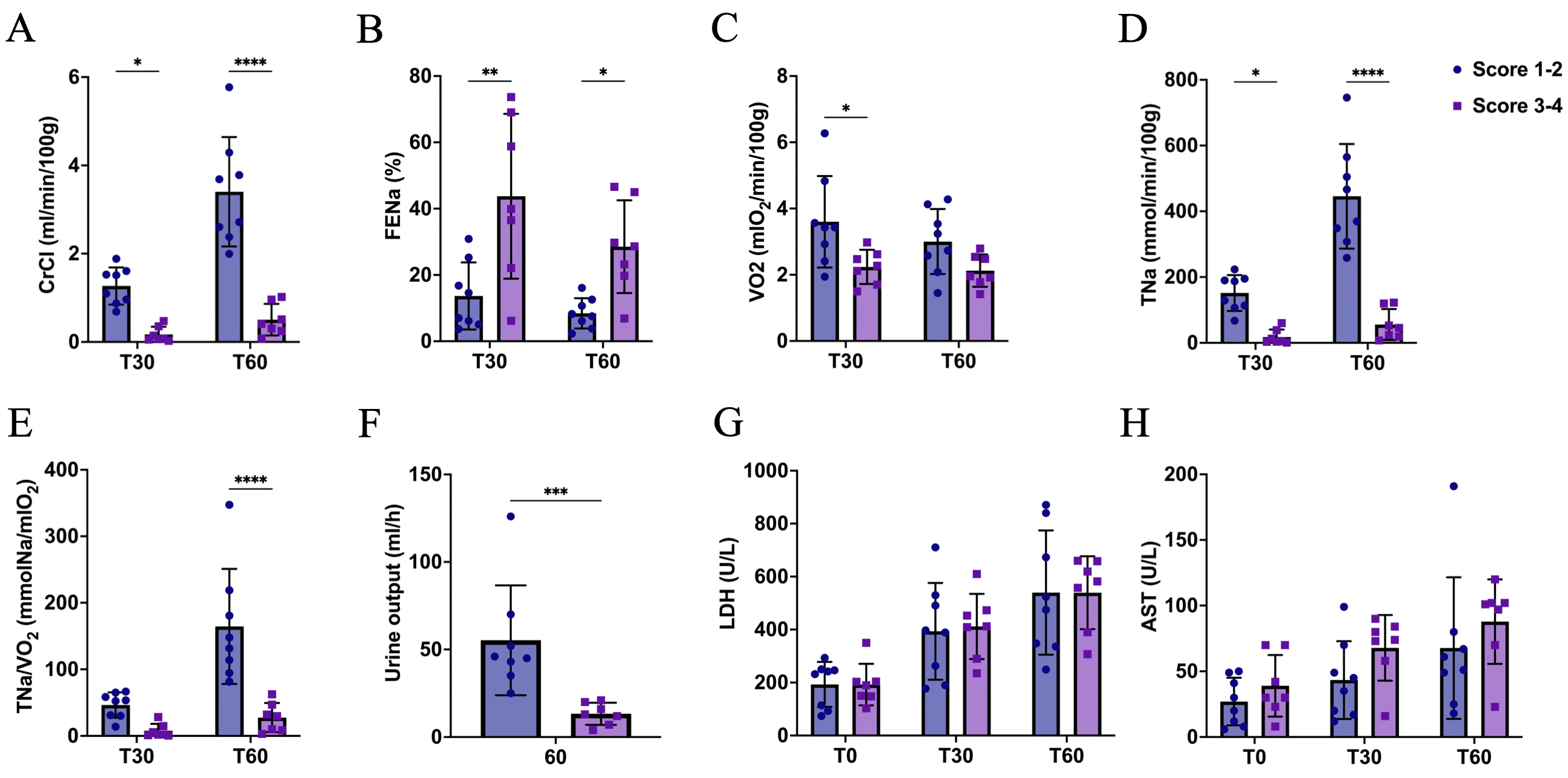A simple scoring system during normothermic machine perfusion may salvage kidneys initially declined for transplantation
Yitian Fang1, Gisela Ambagtsheer1, Robert Minnee1, Ron de Bruin1.
1Transplant Institute, Erasmus Medical Center, Rotterdam, Netherlands
Introduction: A significant proportion of kidneys procured from postmortal donors are discarded due to concerns of quality. Normothermic machine perfusion (NMP) provides a platform to assess kidney quality prior to transplantation. In this study NMP was used as an assessment tool to investigate the quality of human kidneys declined for transplantation.
Methods: Data from 40 human kidneys undergoing NMP before transplantation were analyzed to identify thresholds for renal blood flow and urine output, based on graft survival. These thresholds, combined with the donor type (expanded criteria donor, or not), were integrated into a kidney quality assessment score ranging from highest quality, 1, to lowest, 4, Figure 1A). This scoring system was applied to a series of 14 discarded human kidneys undergoing 60 min of NMP with an oxygenated red cell-based solution at 37°C.
Results: In the 40 transplanted kidneys, the scores ranged between 1 and 3 (score 1: 4; score 2: 27; score 3: 9). The death-censored graft survival was 90% and 67% in kidneys scoring 1-2 and 3, respectively (P = 0.017, Figure 1B). The delayed graft function rate was 45% (14 of 31) in kidneys scoring 1-2, and 67% (6 of 9) in those scoring 3 (P = 0.45). In the discarded kidney series, 5 (36%) scored 1-2, and 9 (64%) scored 3, suggesting that these kidneys were eligible for transplantation. For the functionality and injury assessment, kidneys scored 1-2 exhibited significantly higher creatinine clearance (3.4±1.2 vs 0.5±0.4 ml/min/100g), sodium reabsorption (445.5±159.2 vs 55.9±47.0 mmol/min/100g, p<0.0001), and oxygen utilization efficiency (164.5±86.5 versus 27.6±22.0 mmolNa/mlO2, p<0.0001), but the injury was similar.


Conclusion: This study introduces a simple scoring system for kidney quality assessment during NMP. Although none of these discarded kidneys were transplanted, these data suggest that kidneys with a score of 1-2 should be considered for transplantation.
The authors thank the donors and their families for their permission and trust in the use of discarded donor kidneys for research purposes.
[1] Kidney transplantation
[2] Deceased donor
[3] Organ donation
[4] Organ utilization
[5] Machine perfusion
[6] Organ quality assessment
